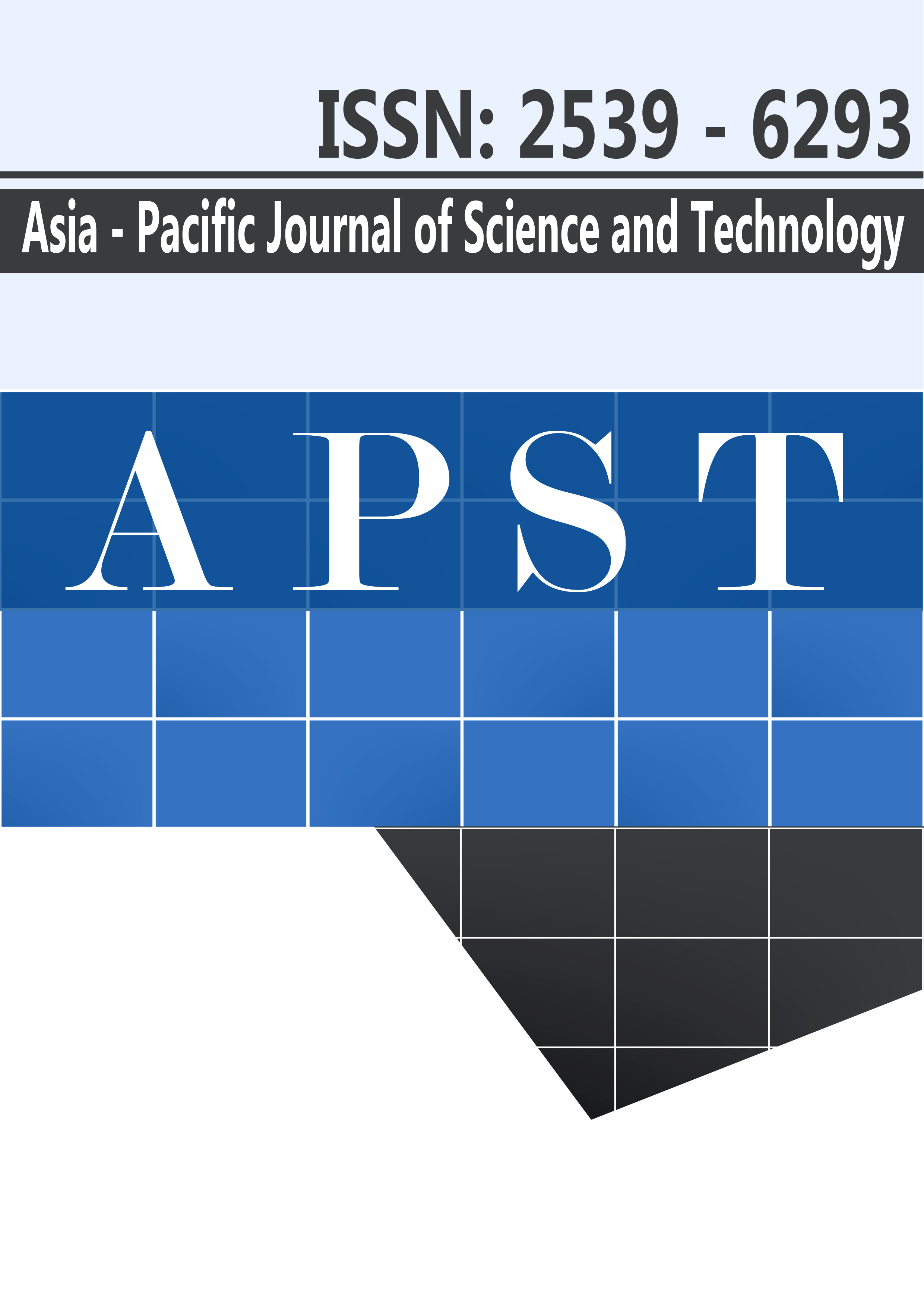Investigation of parameters affecting cotton waste shredding for as straw mushroom substrates
Main Article Content
Abstract
The objectives of the study were to investigate the effects of shredding parameters on cotton waste reduction for straw mushroom substrate before filling into polyethylene bags. The variables of this study include: rotating knife sets in a spiral shape and V-shape, belt conveyor speeds at 1.4 rpm, 1.7 rpm and 2.33 rpm, rotating knife speeds at 131.6 rpm, 157.1 rpm and 183.1 rpm. It was found that the substrates shredding quantity and capacity depend on all variables, especially the impact of belt conveyor speed, which was consistent with statistical analysis. For the V-shape rotating knives, a belt conveyor speed of 2.33 rpm and rotating knife speed of 183.1 rpm had a high shredding capacity, of about 380 kg/hr, which is the best result for this article.
Article Details
References
[2] Chang, S. T. MPG. Recent trends in world production of cultivated edible mushrooms. Mushroom J. 1991;504:15-18.
[3] Islam MZ, Rahman MH, Hafiz F, Discipline B, Road Q. CULTIVATION OF OYSTER MUSHROOM Pleurotus. Islam ZeitschriftFürGeschichte Und KultDes Islam Orients. 2009;4(Feb):45-48.
[4] O.P. Ahlawat RPT. CULTIVATION TECHNOLOGY OF PADDY STRAW MUSHROOM (Volvariellavolvacea). INDIA: National Research Centre for Mushroom (ICAR);2007.
[5] Chen S, Ma D, Ge W, Buswell JA. Induction of laccase activity in the edible straw mushroom, Volvariellavolvacea. FEMS Microbiol Lett. 2003;218(1):143-148.
[6] Tansakul A, Lumyong R. Thermal properties of straw mushroom. J Food Eng. 2008;87(1):91-98.
[7] Kamthan R, Tiwari I. Agricultural Wastes- Potential Substrates For Mushroom Cultivation. Eur J Exp Biol [Internet].2017[cited 2018 Oct 3];7(5). Available from:https://www.imedpub.com/articles/agricultural-wastes-potential-substrates-for-mushroom-cultivation.php?aid=20589
[8] Chang ST. Production of the straw mushroom from cotton waste. Mushroom J. 1974;21:348–353.
[9] Kwak WS, Kim YI, Seok JS, Oh YK, Lee SM. Molasses and microbial inoculants improve fermentability and silage quality of cotton waste-based spent mushroom substrate. Bioresour Technol [Internet].2009[cited 2018 Oct 3];100(3). Available from:https://linkinghub.elsevier.com/retrieve/pii/S0960852408006780
[10] Babu BR, Parande a K, Raghu S, Kumar TP. Cotton Textile Processing: Waste Generation and Effluent Treatment. J Cotton Sci. 2007;153(11:141):141–153.
[11] WenJie Yang, FengLing Guo ZW. Yield and size of oyster mushroom grown on rice/wheat straw basal substrate supplemented with cotton seed hull. Saudi J Biol Sci. 2013;20:333–338.
[12] Parvin S, Chen Y. Post-decortication Processing of Hemp Fibre using a Carding Machine. In: Canadian Society for Bioengineering Annual Conference; 2011.p.1–10.
[13] N.Sridhar DA. S. Shredding efficiency of agricultural crop shredder as influenced by forward speed of operation, number of blades and peripheral velocity. Int J Appl Innovation Eng Manage. 2016;5(10):129-37
[14] Tang SX, He Y, Zhang PH, Jiao JZ, Han XF, Yan QX, et al. Nutrient digestion, rumen fermentation and performance as ramie (Boehmerianivea) is increased in the diets of goats. Anim Feed Sci Technol [Internet].2009[cited 2018 Mar 1];247:15–22. Available from:https://www.sciencedirect.com/science/ article
[15] PattarachaiVichaiya. Fabrication of Water Hyacinth Shredder. In: The 11 th Thai Society of Agricultural Engineering International Conference; 2018 April 26-27; Thailand; 2018:24–26.


